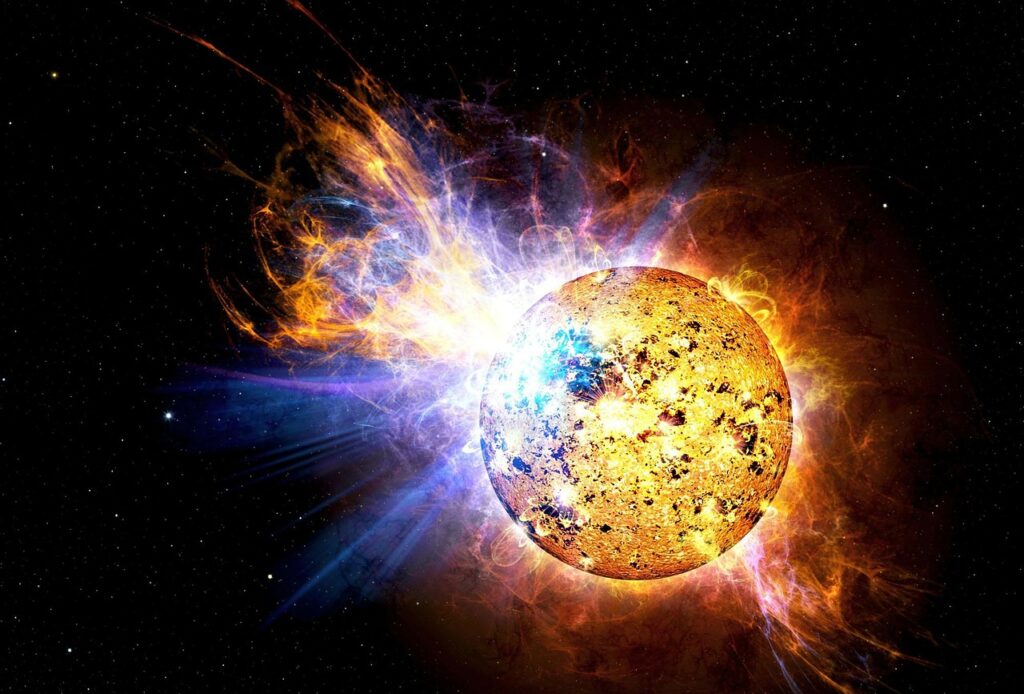A team of researchers from Nagoya University succeeded in developing the first physics-based model that can accurately predict imminent large solar flares.
The team was led by Professor Kanya Kusano, Director of the Institute for Space-Earth Environmental Research at Nagoya University.
What are solar flares?
It is a sudden flash of increased brightness on the Sun, usually observed near its surface and close to a sunspot group. Powerful flares are often, but not always, accompanied by a coronal mass ejection (CME).
This new method for predicting solar flares is called the kappa scheme. It is based on the theory of “double-arc instability,” which is a magnetohydrodynamic (MHD) instability triggered by magnetic reconnection. The researchers assumed that a small-scale reconnection of magnetic field lines can form a double-arc (m-shape) magnetic field and trigger the onset of a solar flare. The kappa scheme can predict how a small magnetic reconnection triggers a large flare.
The team collected data of 200 active regions during solar cycle 24 from 2008 to 2019 using NASA’s Solar Dynamics Observatory (SDO) satellite. They showed that the current method predicts the most imminent solar flares, as well as the precise location they will emerge from though there are a few exceptions.
The team also discovered that a new parameter, the “magnetic twist flux density” close to a magnetic polarity inversion line on the solar surface, determines when and where solar flares probably occur and how large they are likely to be.

(Credit: Institute for Space-Earth Environmental Research, Nagoya University)
Previous methods have relied on empirical relations in which the predictions of the previous day tend to continue into the next day even if flare activity changes. In contrast, the current method predicts large solar flares through a physics-based approach regardless of previous flare activity.
It will need more work to implement the method in real time solar flare prediction but this atleast opens up doors for a physics-based method to predict dangerous solar flares.
Journal Reference:
Kanya Kusano, Tomoya Iju, Yumi Bamba, Satoshi Inoue. A physics-based method that can predict imminent large solar flares. Science, 2020; 369 (6503): 587 DOI: 10.1126/science.aaz2511

